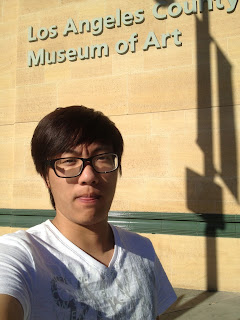Geometric abstraction, which reminds me of the topic of art and math, emphasizes on clear and distilled forms, became the dominant visual language that reflected a move toward modernization and industrialization. The following painting is created by Joaquin Torres Garcia. This art work may be hard for us to understand, when I saw the painting for the first time, the only word came up to my mind is religion and my guess is close to the answer. The painting integrates symbols into his abstract compositions to create what he called a universal constructivist art.
This art work is created by Gego. Although these weblike constellations made with joined wire segments may let you feel dizzy, they allowed the artists to draw in space.
This art work named “Space ”is created by Lee Mullican
to express the opening of the a new world, opening of the mind into a kind of
cosmic thought. Lee is a example of artists who have drawn their inspiration
from the beauty of space.
The following art work is my favorite during the
visit. I am not an art major student and have no knowledge of contemporary art.
However, when I first saw the painting, I thought it was about music and my
feeling is correct. If I could describe the painting in one world, it would
have to be “active”. A harmonious arrangement of geometric shapes floats in
space, suggesting the joy of musical tempo. Furthermore, the bright color makes
it no longer a painting but a music.

























